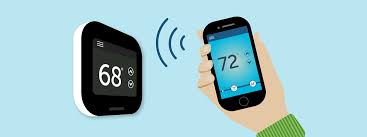
| IN THIS ISSUE | Switch to Paperless Billings back to top >> | |||||||

Norris
Public Power District |

|
|||||||
| Energy Saver back to top >> | ||||
|
When was the last time your home's thermostat was adjusted to reduce energy costs? A 2018 survey indicated that only half of Nebraskans living outside metropolitan areas were likely to adjust their thermostat when leaving home. Considering about 50% of home energy consumption is used for heating and cooling, significant savings could be realized. The U.S. Department of Energy states that energy costs can be reduced up to 10% a year by simply turning your thermostat back by 7 to 10 degrees for eight hours a day. They recommend settings of 68 degrees in the heating season and 78 degrees during the cooling season when someone is home. When away or during sleeping hours, they suggest turning the thermostat down to 55 degrees in the winter and up to 85 degrees or higher in the summer. 
The U.S. Environmental Protection Agency's ENERGY STAR program concluded that homes with smart thermostats can save up to $180 per year on heating and cooling. With quality units ranging from $60 to a few hundred dollars, they quickly pay for themselves. While installing a smart thermostat may not be the right choice for those who move often, rent or seldom leave their home, most can enjoy this hassle-free way of managing home temperatures and energy use. |
||||
| Storm Watches vs. Warnings back to top >> | ||||

At any moment, 1,800 thunderstorms occur worldwide, according to the National Weather Service. That is 16 million storms a year. In an average year, 1,200 tornadoes cause 60 to 65 fatalities and 1,500 injuries in the United States alone. | ||||
| Easter Poke Cake Recipe back to top >> | ||||
 |
||||
| |
||||
| This is an ongoing communication. If you wish to unsubscribe from these emails, please unsubscribe here |



 A watch means there is a significant chance of a severe thunderstorm or tornado. Watch and wait for more information while taking precautionary measures, like unplugging electronics and checking the contents of your emergency preparedness kit.
A watch means there is a significant chance of a severe thunderstorm or tornado. Watch and wait for more information while taking precautionary measures, like unplugging electronics and checking the contents of your emergency preparedness kit.